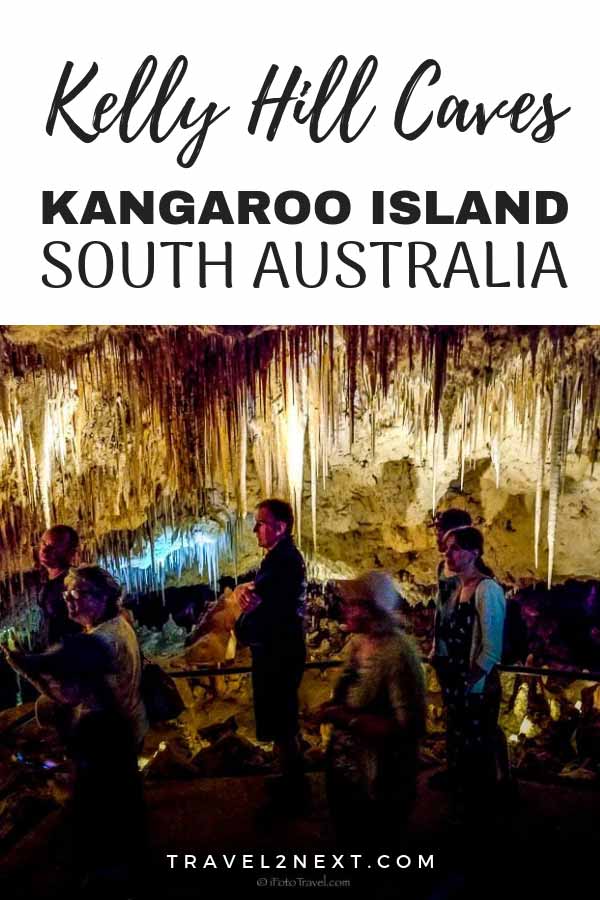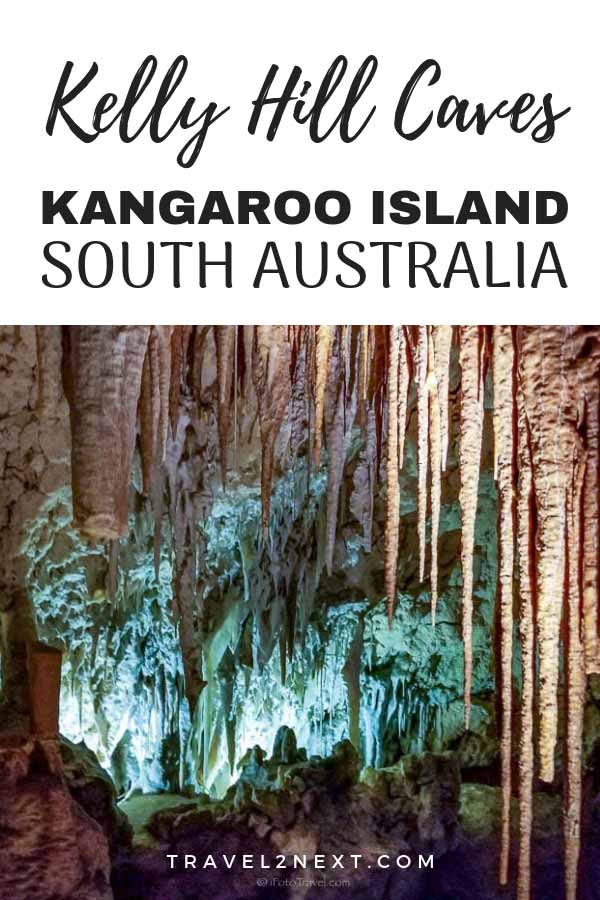Ever had the urge to become a cave explorer or underground adventurer? Then you need to check in at Kelly Hill Caves in Kelly Hill Conservation Park on Kangaroo Island. The caves are on the South Coast Road at Karatta, heading towards Seal Bay, 90km from Kingscote and about 1 1/2 hrs from Penneshaw and the endpoint for the amazing Kangaroo Island Wilderness Trail. Actually, Kelly Hill Caves is one of my favourite places on KI.
Contents
Kelly Hill Caves
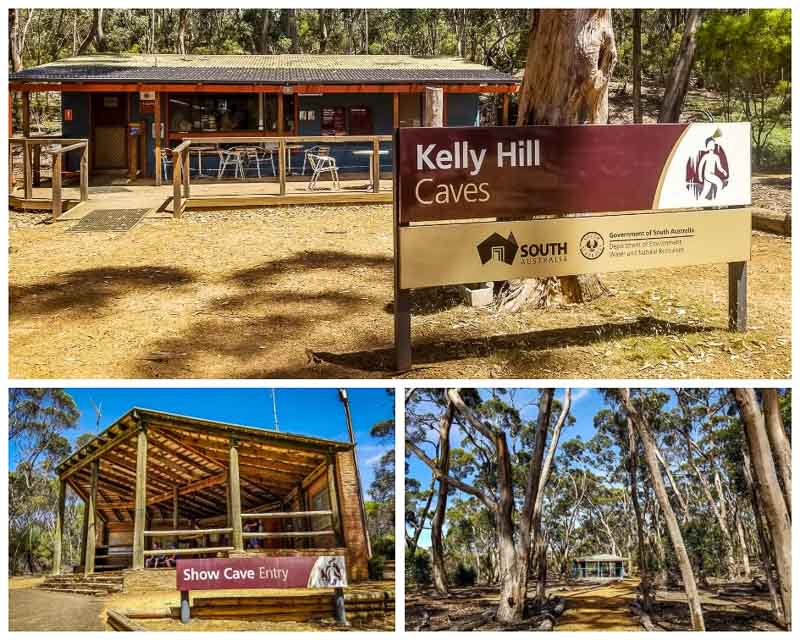
The caves are a beautiful 16 degrees Celcius all year round, cool in summer and warm in winter.
Visiting the caves is a perfect thing to do on Kangaroo Island when the weather is inclement or hot.
Now, that in itself is a huge drawcard!
Looking for more things to see in South Australia? Try these gems.
History of Kelly Hill Caves
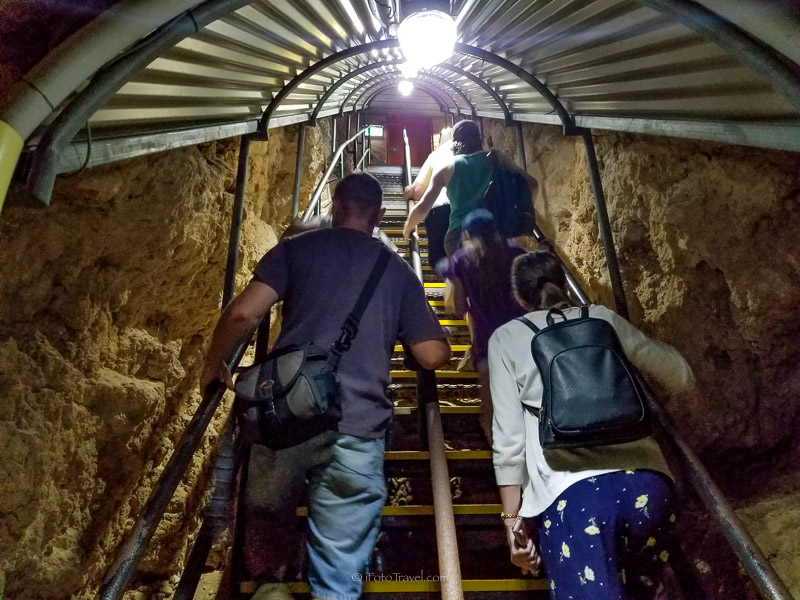
In 1885 a local stockman called Fred Kelsey was riding his horse, Kate Kelly, looking for lost sheep when they both accidentally fell into a massive sinkhole.
Kelsey managed to find his way out of the cave but Kelly was injured in the fall.
On his return to the sinkhole to show other locals what had happened, he couldn’t find either the horse or the sinkhole.
The remains of Kelly have never been found but the legend gave rise to the name of the caves as they are known today.
However, it was many years later until the caves were rediscovered in 1925 by a group of adventuring Kangaroo Islanders.
Harold Bell thought the caves would make a tourist attraction and began guided tours of the caves.
To make sure the caves would be protected, the local government appointed Harold as official caretaker of the caves in 1926.
Those early tours involved part of the current main cavern but extended much further than those today.
It’s hard to imagine what they were like with only candlelight available at the time.
They even numbered the ceilings of the chambers to help visitors find their way.
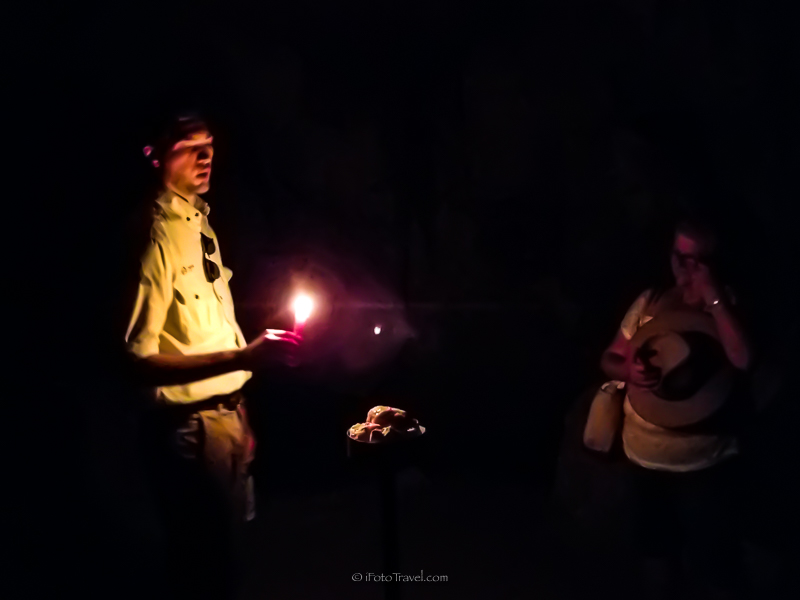
Since 1972 National Parks and Wildlife Service took over management of the caves, and now they are a hugely popular Kangaroo Island attraction.
Geology Of Kelly Hill Caves
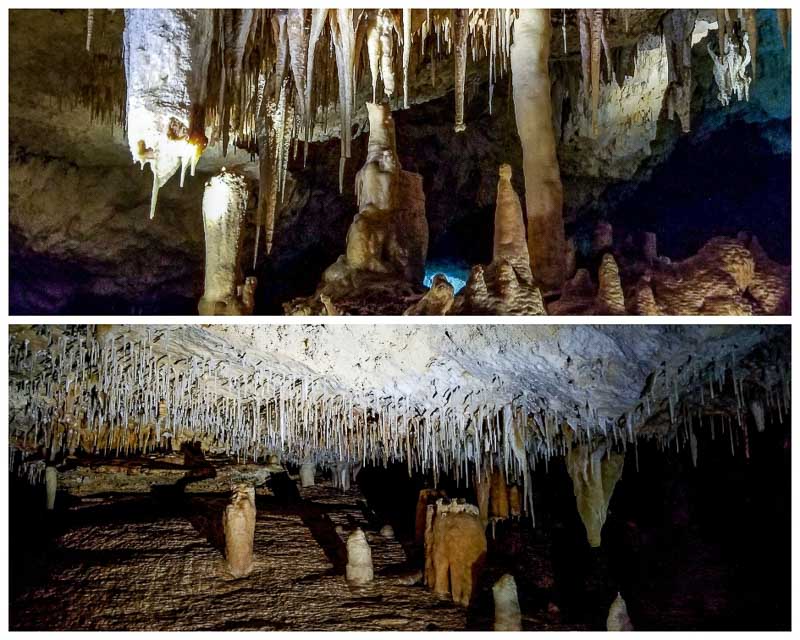
Kelly Hill Caves is a ‘karst’ cave system, a landscape formed by the dissolution of soluble rock such as limestone (calcium carbonate or calcite).
As rainwater soaks through the soil, it seeps into the soft limestone and begins to dissolve it.
An underground stream forms a small wet cave.
In time, the stream sinks deeper into the ground leaving a dry cave behind but with a deeper wet cave below it.
Thus an underground system of caves is formed.
When the overlying soft roof of the dry cave collapses, a sinkhole is formed.
Kelly Hill Caves are now a ‘dry’ limestone cave system similar to the Capricorn Caves in Queensland.
There has been no rainwater seepage through the caves for over 25 years, as you often get in wet caves, and only rarely can a small drop of water be seen on the tip of a stalactite.
They are relatively young caves too, being only 500 million years old, while other South Australian cave systems are much older.
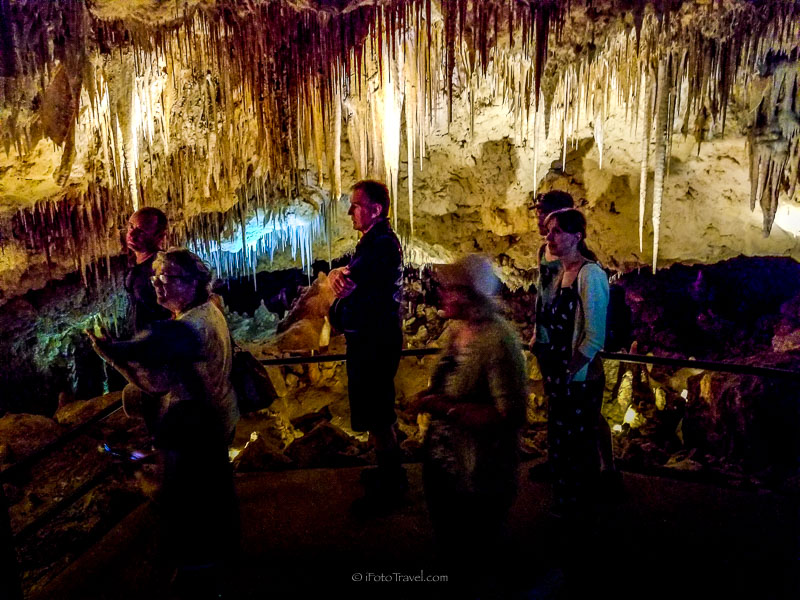
Comprising essentially petrified sand dunes formed from the soft porous dune limestone, they are truly spectacular unique formations and ecosystems.
Fossils Of Kelly Hill Caves
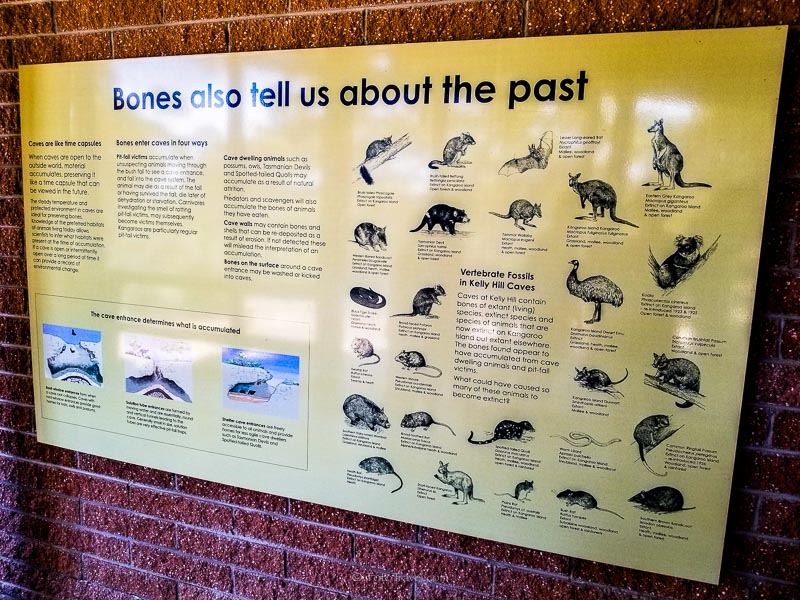
As sinkholes allow animals to fall in and become trapped, there are abundant fossilised remnants in the caves including some of Kangaroo Island’s mega-fauna.
In 1957 a complete skeleton of a long extinct Kangaroo Island dwarf emu was said to have been recovered.
In 1966 a rare find was a 45,000-year-old skull from a prehistoric giant short-faced kangaroo.
These now-extinct marsupials were more than 2m tall and weighed 200kg.
Apparently, fossils discovered recently in only about 4m of soil have dated back to 130,000 years ago.
Now that’s exciting!
As much of the Kelly Hill Caves system is relatively unexplored, this is a geologic site of great importance just waiting on discovery.
Limited only by much-needed exploration funds or University or Government sponsorship, there is a vas of Australiana historical wealth remaining yet to be discovered.
Kelly Hill Cave Tours
Kelly Hill Caves are open every day of the year from 10.15 am to 4.30 pm, except Christmas Day.
The entrance to the caves is at the top of a hill along the Harold Bell Path, a short five to 10-minute meander through the bushland.
The Show Cave Tour
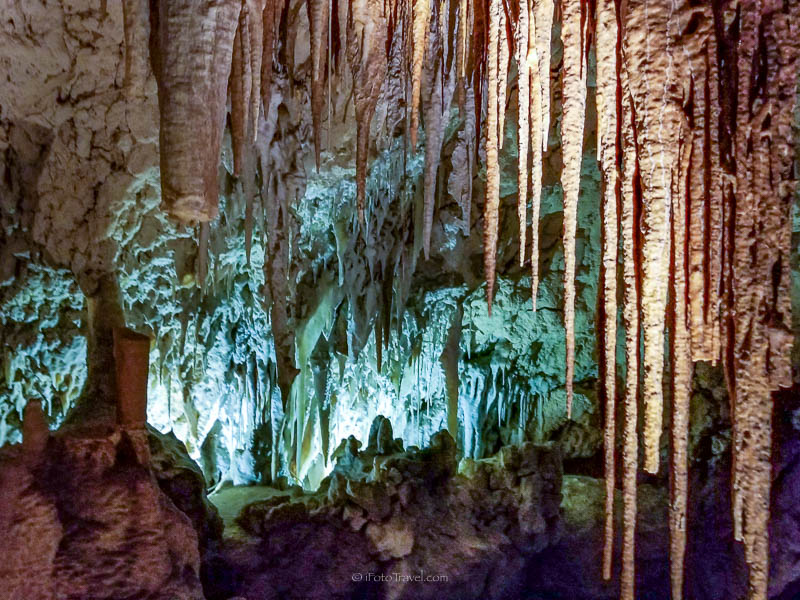
The Show Cave Tour is approximately 40 minutes and is worthwhile doing.
Some days running hourly, you get to see four main caverns which are quite large and well illuminated.
These dry (literally dry, with no dripping or seeping water to be seen) limestone caves have some fantastic formations.
There are the usual stalagmites, stalactites and columns where they have joined up.
It’s a small cave system, being relatively young caves mean they also have rather delicate formations such as straws and helictites.
One formation looks like a ballet shoe structure and was my favourite.
The limestone is quite soft and there are large slabs of flowstone too.
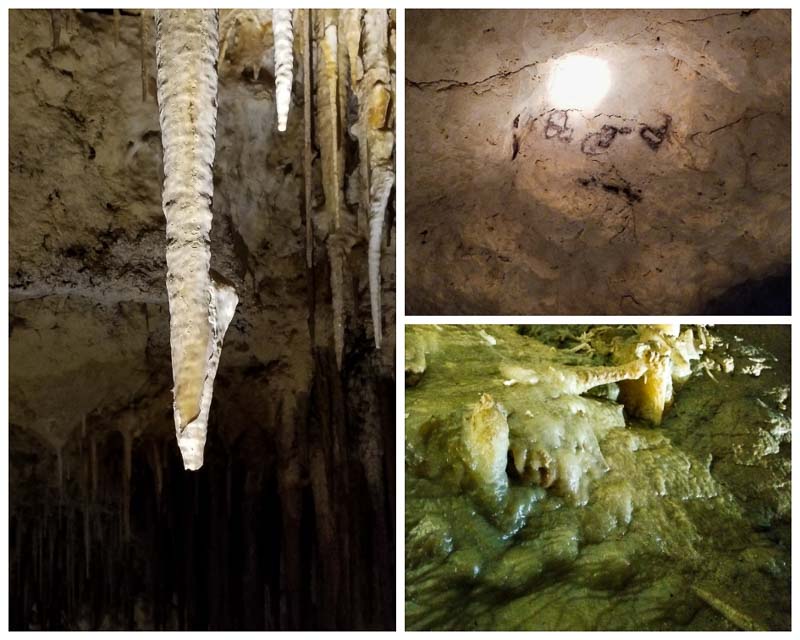
Much of the limestone has different amounts of iron content adding a variable rusty colouration to it.
This gives rise to fascinatingly different colours on illumination and different weights of rock.
Some rocks are magnetic with others reputed to have healing properties if touched or rubbed.
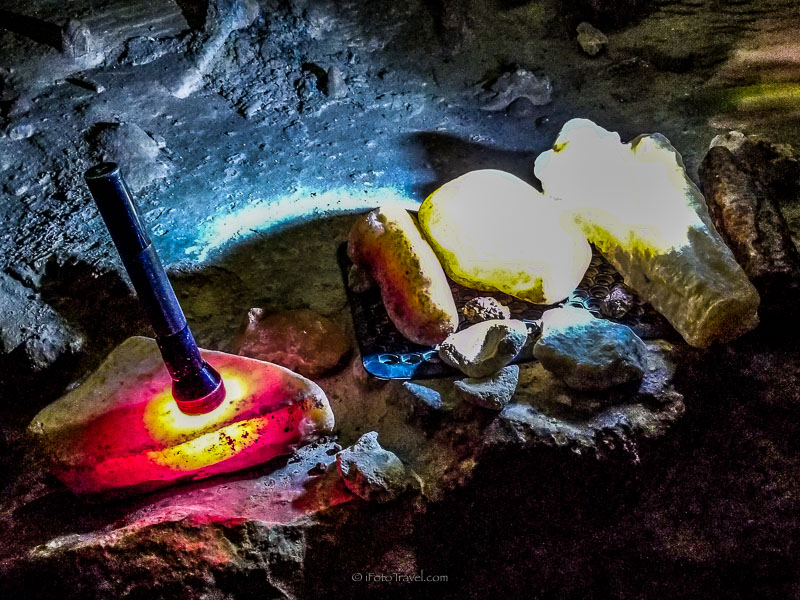
There are marks on the ceilings from candle smoke, soot and carbon, as well as pieces of wood incorporated into the limestone from old supports for the cavern roof.
Reasonable footwear is advised for this Kangaroo Island activity as there is a relatively steep but well-illuminated staircase entering the cave, with no disabled access.
Perhaps take a long-sleeved jumper or jacket as well if you are particularly sensitive to cooler temperatures.
The Adventure Caving Tour
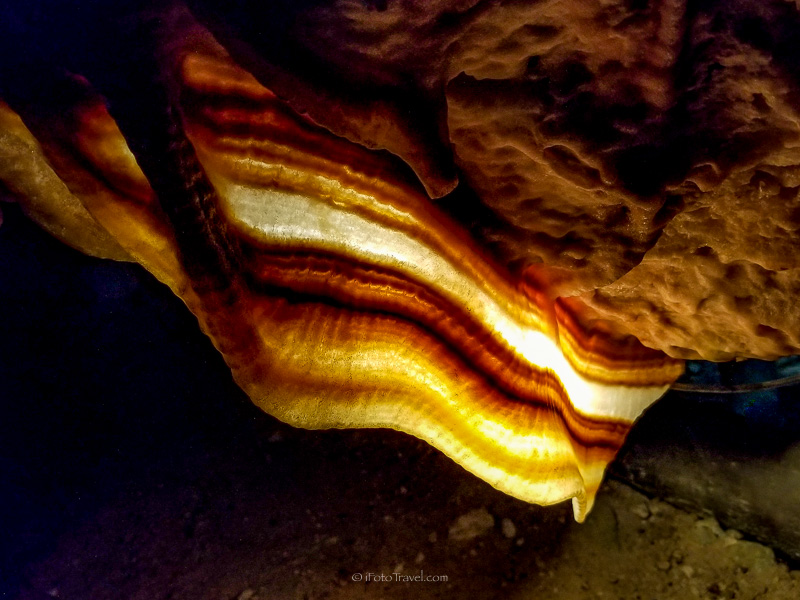
This two-hour cave tour is for the more adventurous intrepid explorers (a minimum of four people in a group over eight years old).
You still have to attend a Show Cave Tour first as an introductory experience.
Then, complete with helmet, headlamp, and torch, you begin your adventure by a crawl through a narrow maze of smaller caverns, including parts of the original subterranean cave.
Part of this original 1920 cavern includes a small silt chamber in which fossils and bones can be seen.
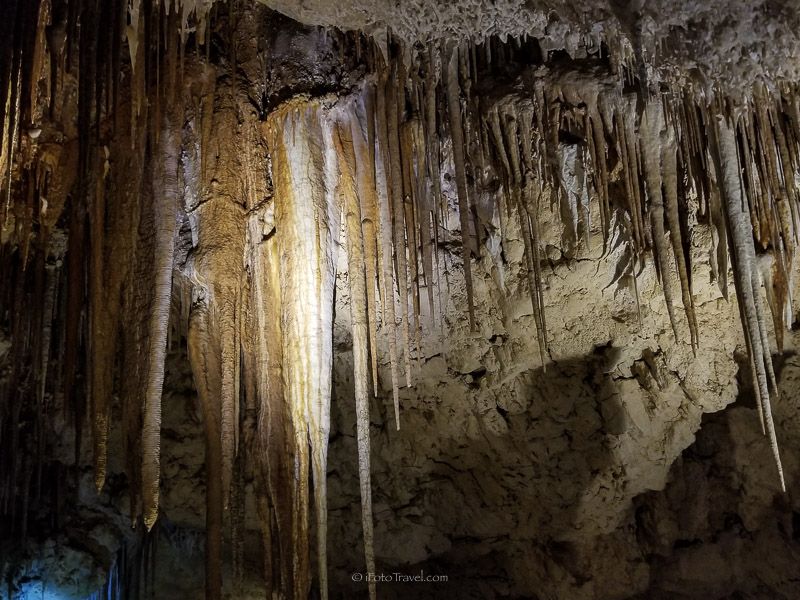
Tour Times at Kelly Hill Caves
You can either turn up and take a walk around the park while waiting for the next tour or if you are on a tight schedule, call first to find out the time of the next tour.
The Adventure Caving Tour runs only on certain afternoons around 2.15pm and prior booking is essential.
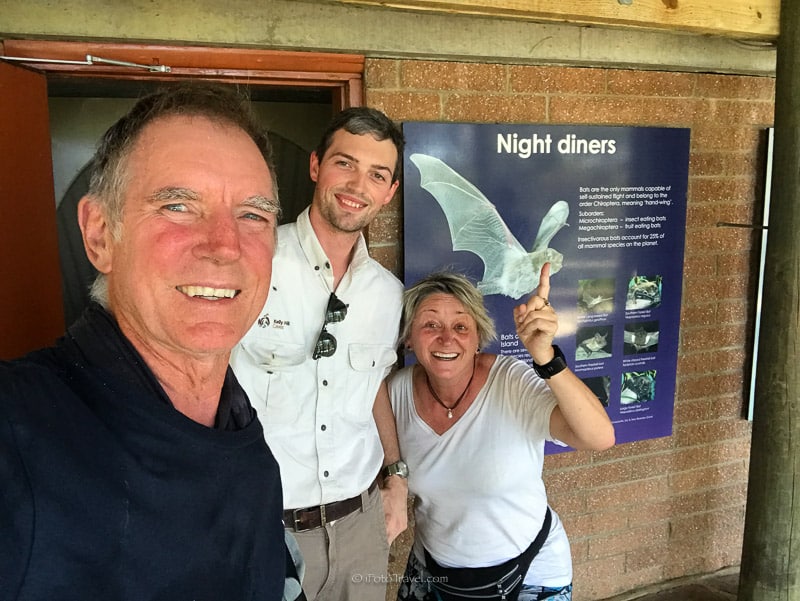
The Kelly Hill Show Cave Tour costs $20 per adult (>16yrs) and $11 per child (3 to 15yrs), or $52 per family (2+2, or 1+3).
The Kelly Hill Adventure Caving Tour costs $76.50 per adult and $45.50 per child (>8yrs).
Concession fees also apply for both of these Kangaroo Island activities.
Great for kids to explore and play, Kelly Hill Caves is set in a lovely sugar gum bush setting.
With BBQ facilities and a covered picnic outdoor shelter complete with fly screen (essential in Australian summers)!
The Visitor Centre kiosk has cold drinks and ice creams.
What better way to have a quiet lunch in an authentic Australian landscape while waiting for a cave tour?
Kelly Hill Conservation Park Hikes
While the Conservation Park is most famous for its underground limestone caves and sinkholes, it is also a corridor for high biodiversity vegetation across the south coast of Kangaroo Island.
Burgess and Mays Hikes
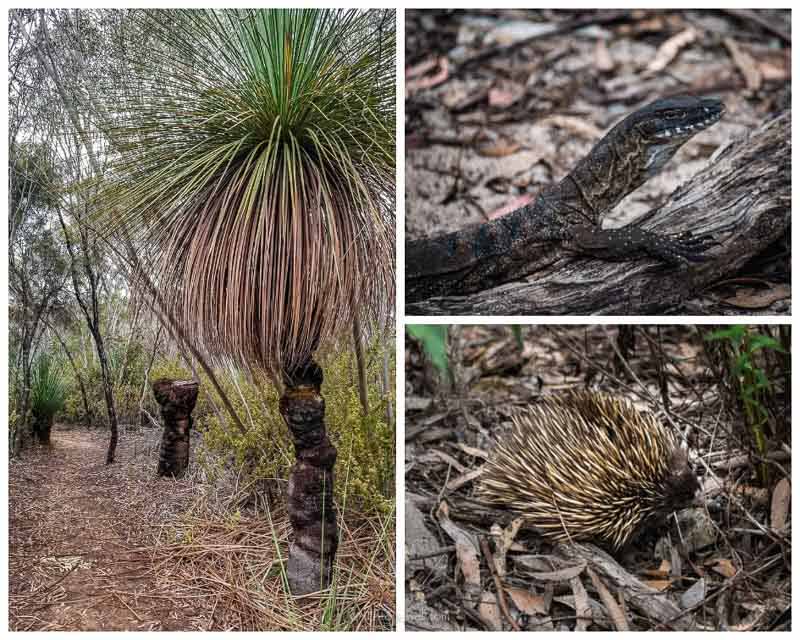
This vegetation features sugar gum eucalypt forest and mallee woodlands particularly surrounding the Caves. There are two short walks, Burgess Hike which also takes in Mays Walk, both starting at the Visitor Centre. The circular route is only 1.25km and takes about 30mins.
Complete with interpretive signs, you can learn about local fauna or check out the some of the larger cave sinkholes. Both walks also take you up to the cave entrance.
The area is alive with birds, reptiles and other animals.
Keep your eyes peeled for parrots, rosellas, galahs and as well as the famous Australian laughing kookaburras.
You may also catch sight of a goanna wandering along the path, or perhaps an echidna burrowing around for food in the late afternoon.
Wildflowers can also be quite stunning, including pretty native orchids.
Hanson Bay Trail
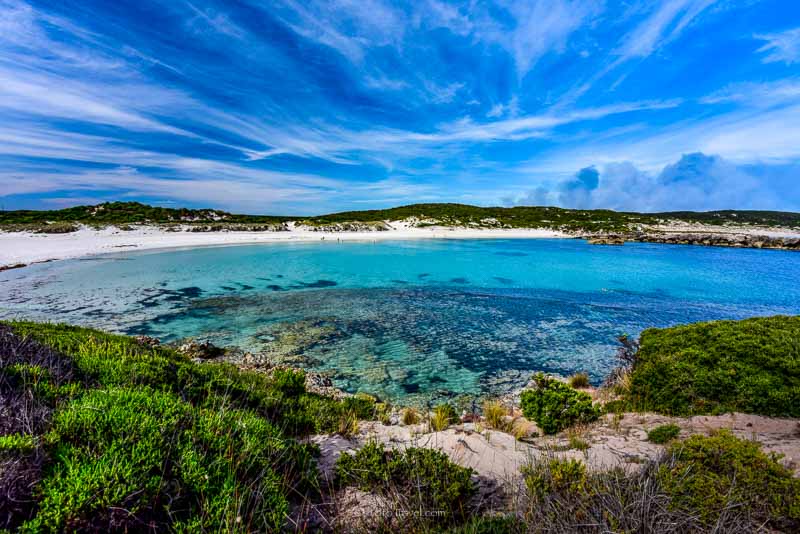
If you love bushwalking and want to trek further afield from the caves, take a walk on the Hanson Bay Trail.
This particular bushwalking trail also forms Day 5 on the Kangaroo Island Wilderness Walk (KIWT) but the hike is in reverse to that on the KIWT which ends at Kelly Hill Caves.
The 16 km return trip takes about six hours unless you can arrange your own vehicular pick up at Hanson Bay.
Take your bathers and a towel too, as well as water and some nibbles for along the way.
The well-marked trail takes you through coastal dunes, trekking past freshwater Grassland and Wilderness lagoons with some spectacular birdlife.
Then follow the South West River to end at the eastern end of Hanson Bay, a truly impressive sight.
Brace yourself for a well-earned cooling dip in the brisk Southern Ocean at the end of your hike.
Kelly Hill Caves is at South Coast Road, Karatta, Kangaroo Island (phone: +61 8 8553 4464)
Plan Your Trip

Rent A Car – Find the best car rental rates at Discover Cars. They compare car hire companies to provide you with the best deal right now.

Find A Hotel – If you’re curious about this article and are looking for somewhere to stay, take a look at these amazing hotels.
